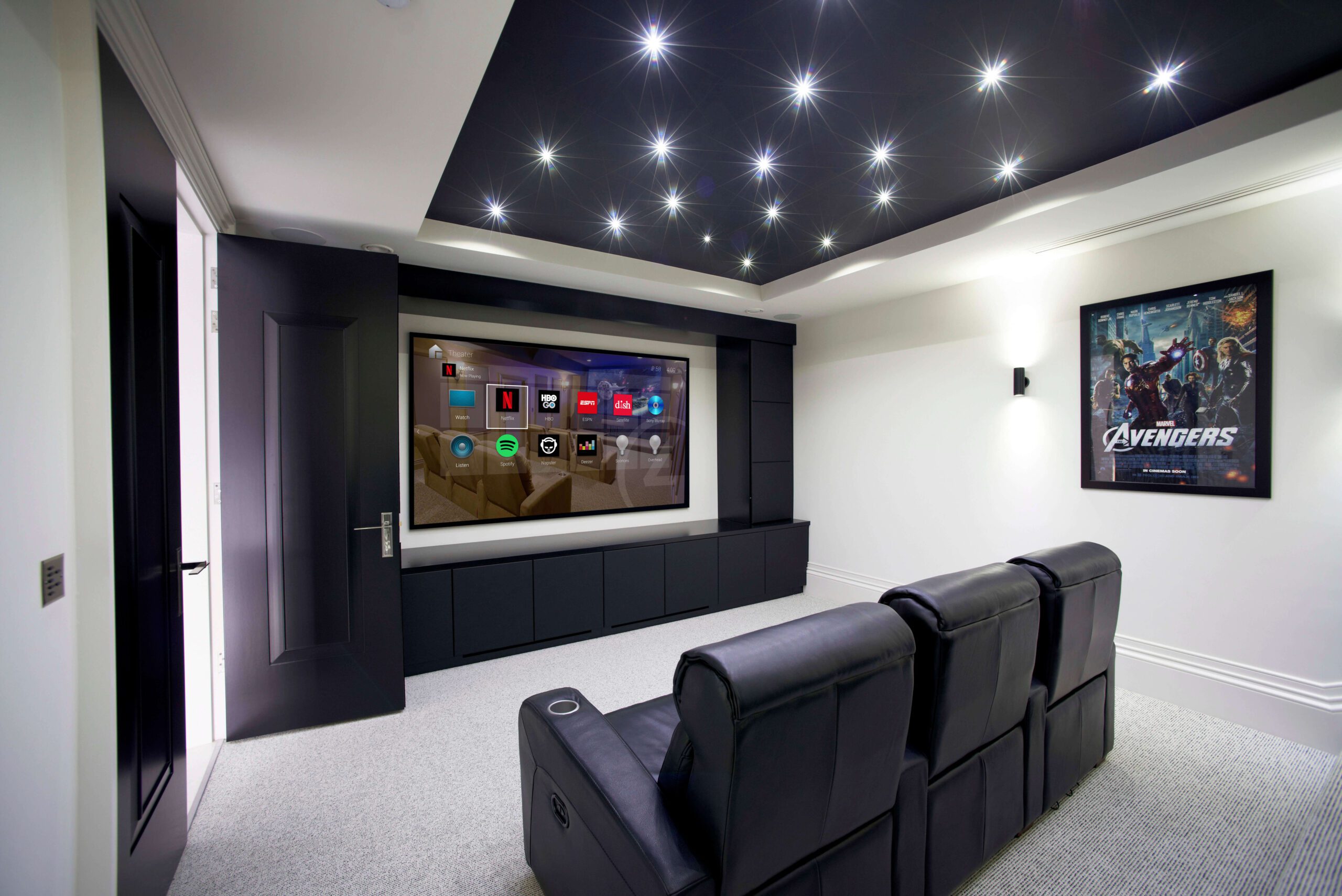
How to Build a Complete Home Theater System
Creating your very own custom home theater system is an exciting venture that brings the magic of a movie theater into your home. Whether your ideal theater experience is to watch movies, sports, or for gaming on a big screen, elevate your entertainment experience to another level with these tips.
Key Considerations for Building a Complete Home Theater System
Room Design and Layout
Your theater room’s size, shape, and acoustics all play an integral part in the experience of your personal home theater.
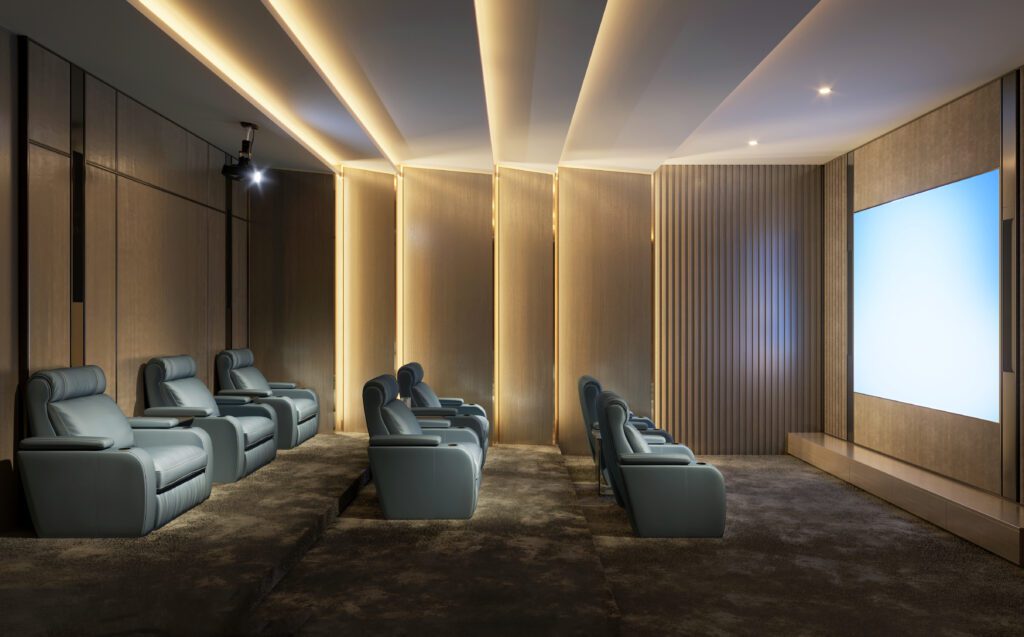
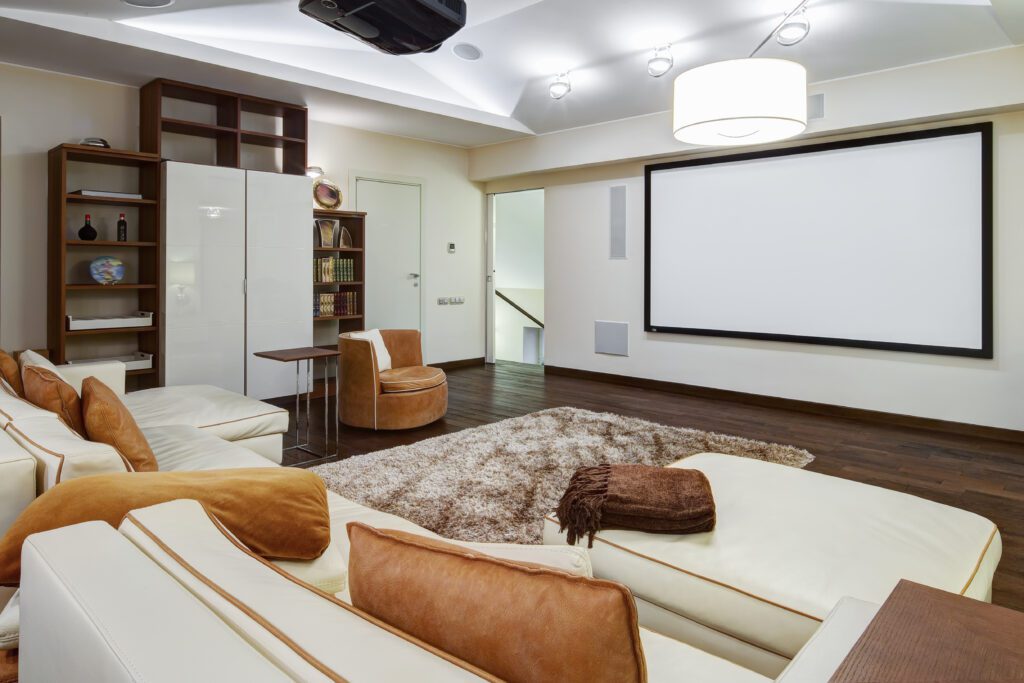
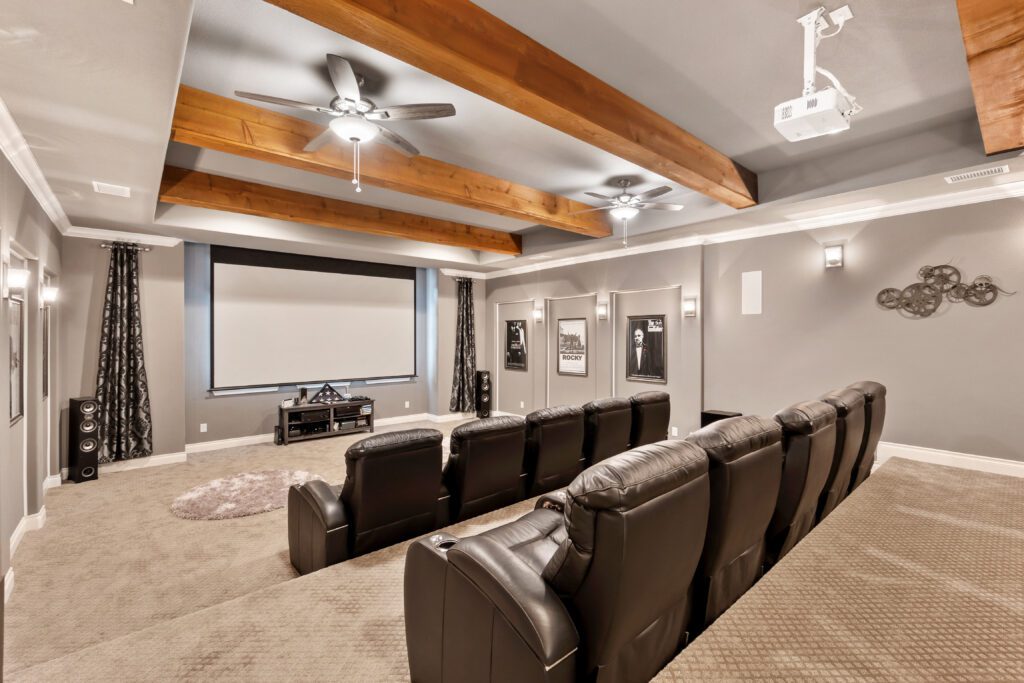
- Room Dimensions: Larger rooms may require more powerful audio systems and larger screens, while smaller spaces benefit from compact setups.
- Acoustics: Soft furnishings like carpets and curtains help reduce echo. Acoustic panels can further enhance sound quality.
- Lighting: Controlled lighting is essential. Installing dimmable lights and/or blackout curtains help give you the best viewing experience.
Display Options
Your screen display is the centerpiece of your home theater. And the bigger, the better. Whether you choose to invest in a TV or projector and screen setup, there are pros and cons to both options.
4K or 8K TVs:
The pros of a using a TV in your home theater is only one device is needed for operation and smart features are built it. It’s also easier to move should you want to change your setup. However, you are limited on screen size and large TVs are heavy and can be awkward to move.
TV Brand Recs: There are many popular 4K or 8K TVs choices to consider, but we would recommend Sony.
Projector and Screen Setup:
The pros of using a projector are the size of the viewing area and image size makes watching much more exciting. Not to mention the machine’s small and portable size. However, a projector is a piece of equipment that will need to be installed. Once installed, projectors also take longer to start up, a projector’s bulbs will need to be replaced, and you may need a streaming device to stream shows or movies.
Project Brand Recs: We’d recommend using Sony or Screen Innovations.
Audio System
What you’re hearing is just as important as what you’re watching. A surround sound system helps create an immersive viewing experience. It’s what separates a space with a big screen from a space with a true home theater. When it comes to what kind of speakers to purchase, there are a few options:
- Box speakers sit in a room
- Small speakers can be mounted to the wall
- In-wall or in-ceiling speakers
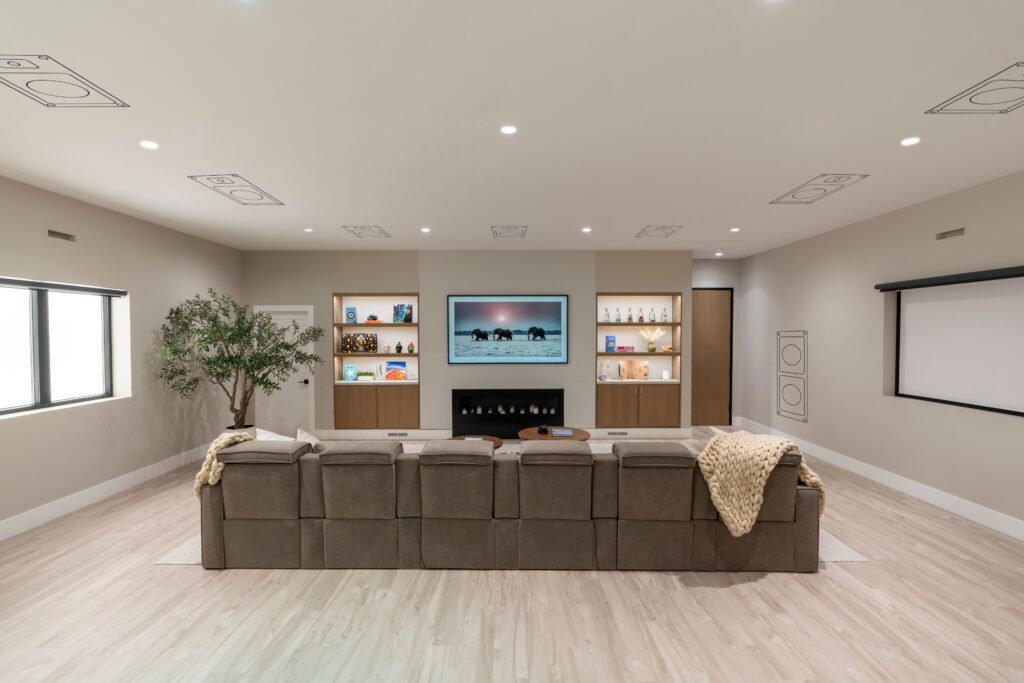
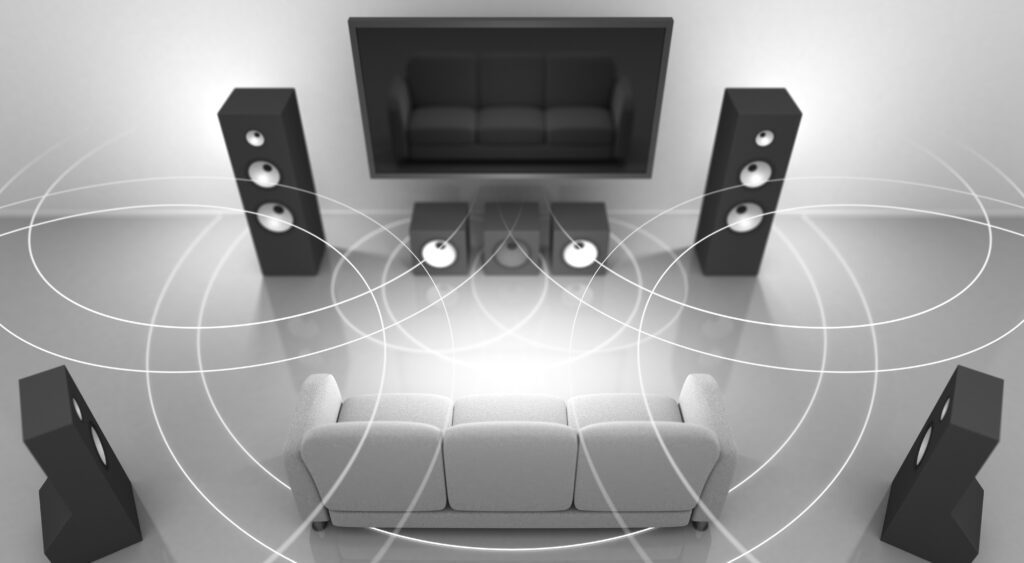
A traditional 5.1 speaker setup gives you three speakers up front (left, right, and center) and two behind, plus a subwoofer. You may also choose an additional two overhead speakers (Atmos).
Speaker Brand Recs:
- Focal: Focal’s integrated speakers are discreet, stylish and high-performance.
- Sonance: Sonance Invisible Series offers an immersive audio solution that seamlessly integrates into any residential space, delivering outstanding performance while preserving the surrounding design’s aesthetic.
- Leon: Designed in collaboration with leading acoustic manufacturers, Leon offers custom designs that provide acoustic detail with stunning accuracy and brilliant clarity.



The AV receiver acts as a device hub, allowing you to connect all your electronics to it. All your electronics can be conveniently stored in a cabinet, and only one cable is needed to run to the TV or projector.
Make sure you have enough ports to support the devices you are looking to connect!
Receivers Brand Recs: Sony, Yamaha, Denon, and Marantz are known for reliable and feature-rich AV receivers.
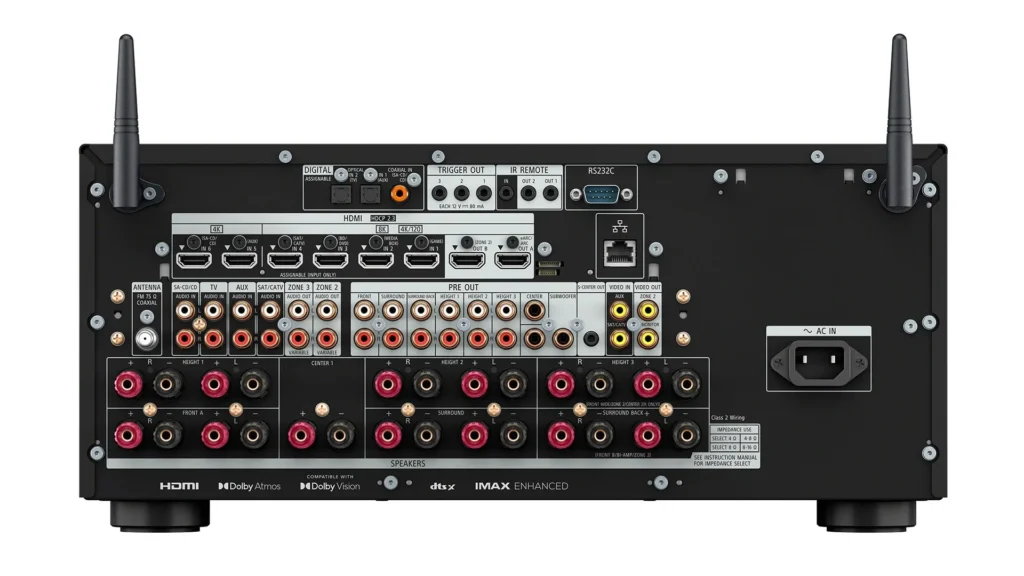
Source Devices
Make sure your home theater is equipped with versatile media sources:
- Streaming Devices like Apple TV, Roku, or Nvidia Shield for seamless access to your favorite streaming platforms, so you can watch TV, movies, sports, or listen to music.
- Blu-ray Players: Panasonic and Sony offer premium players for physical media enthusiasts.
Smart Integration
Controlling your system wirelessly is a must for convenience. Your AV receiver, which powers your speakers and acts as your device hub, should have Bluetooth and WiFi access.

Control System Brand Recs: Automate your theater with smart home systems like Control4 or Crestron, which allow you to control audio, visuals, and lighting with a single app or voice command.
DIY vs. Professional Installation
DIY Setup
Installing your home theater system on your own, without the help of a professional, can save you money upfront, but may end up costing you more in the long run. Here’s what to keep in mind when you’re considering self-installation.
Pros of DIY Home Theater:
- It may be cost-effective for budget-conscious users.
- You have full control over every step of the process.
- You get the satisfaction of completing the setup yourself.
Cons of DIY Home Theater:
- Self-installation requires technical knowledge of wiring and acoustics.
- Installing yourself can be time-consuming and make you more prone to mistakes.
- You may void warranties if your equipment is improperly installed.
- You will need to solve maintenance and troubleshooting issues on your own.
Professional Installation
Professional smart home technology installation is often the best choice, especially for complex systems like a home theater system. A trusted smart home automation company, like HavenSmart, can tailor your setup to your specific needs and ensure that everything works seamlessly. Here are some considerations for a professional installation:
Pros:
- Professional expertise ensures optimal placement and performance.
- Pros have access to advanced tools for calibration and testing.
- Professional installation generally saves time and is hassle-free.
- Professional installers often provide warranties on their work.
Cons:
- There is a higher upfront cost with professional installation.
- You must depend on external schedules for system setup.
Create the Home Theater System of Your Dreams
Building a complete home theater system requires thoughtful planning, quality equipment, and expert installation. While a DIY setup may appeal to some, professional installation ensures a mostly stress-free experience and optimal performance. Schedule a consultation with HavenSmart to learn more about creating the home theater of your dreams.
Frequently Asked Questions
- What is the ideal room size for a home theater?
While any size room can work, larger spaces (12×16 feet or more) are ideal for accommodating bigger screens and advanced sound systems. - Can I integrate my existing devices?
Yes, most modern systems are compatible with existing TVs, gaming consoles, and streaming devices. Plus, HavenSmart can help upgrade or integrate new technology into your existing system. - Can you soundproof a home theater?
Yes! HavenSmart offers a wide range of sound insulation to make sure the sound from your theater stays where you want it – and not where you don’t.
Related Blog Posts
Read past blog posts we've written on the topic.
Related Blog Posts
Read past blog posts we've written on the topic.


